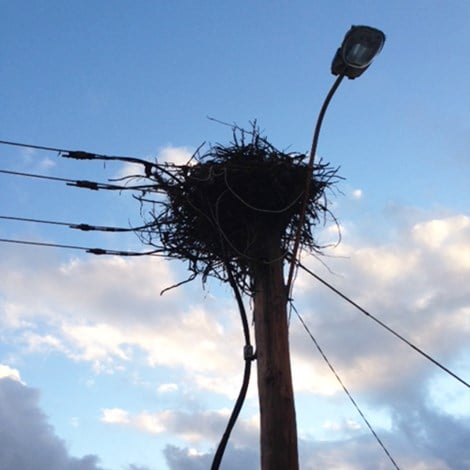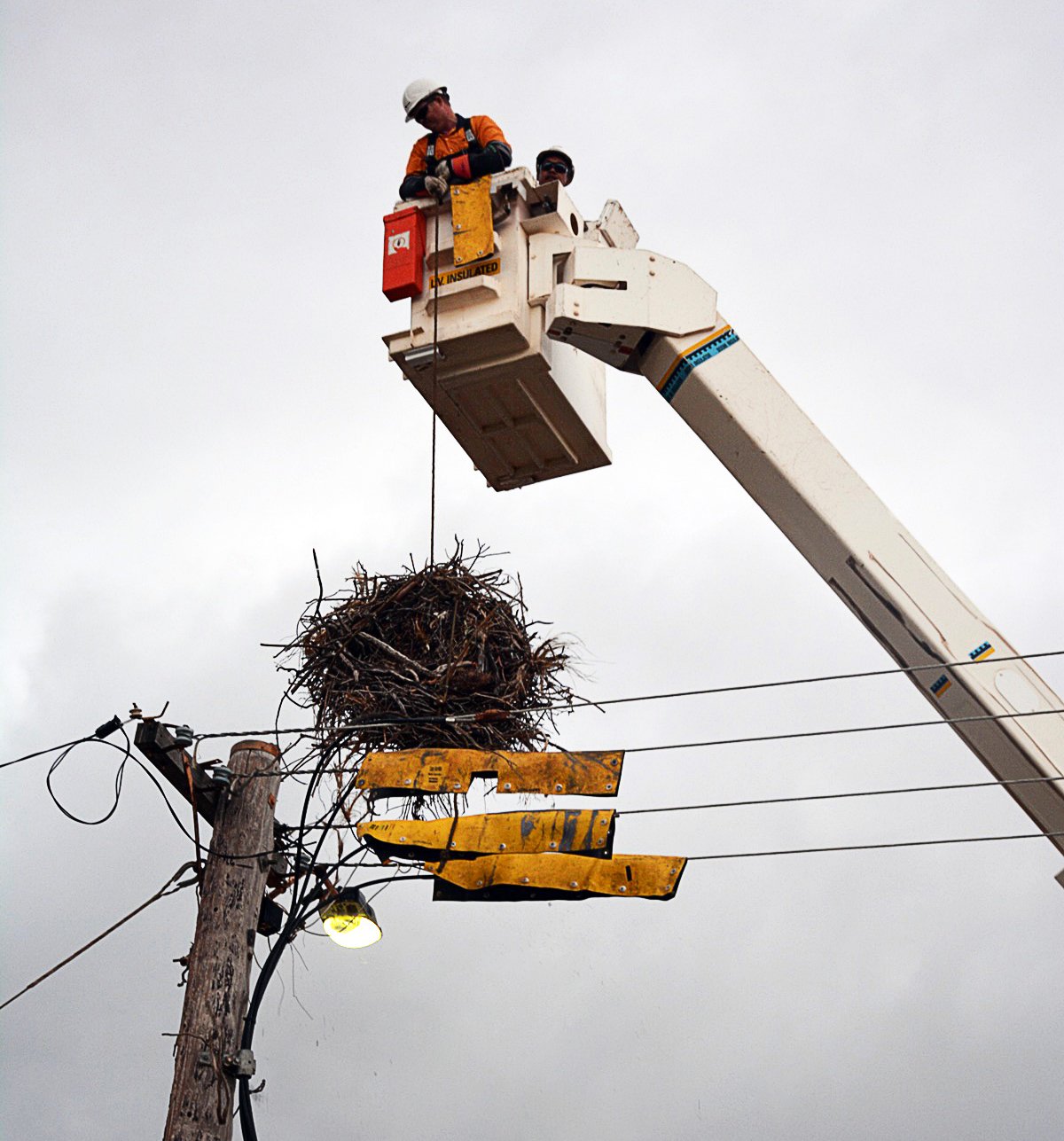Ospreys love to nest on top of power poles.
Just as we like to chill out on the couch at home, some birds like to do the same on top of power poles.
Who knows why they think it’s comfy, but what we do know is that it puts them at risk and has the potential to spark a power outage.
Ospreys set up home in our power pole

It especially rings true for the small coastal town of Green Head. The area, just south of Leeman in WA’s Mid West, is known for its large population of coastal birds. The ospreys, in particular love to nest on top of power poles.
So how do we provide them with an alternative to our in-use poles?
With a bit of innovating thinking, the team at Jurien Bay Depot came up with a way to create a safer home for the ospreys, using decommissioned network poles, some scrap metal and seaweed. With the help of the local shire and community, a new “nursery” for the birds was constructed at Morphett Park.
While it won’t completely eliminate ospreys from gravitating to the real power poles, it has made a difference by providing the birds with an inviting option, and hopefully helping to save our native birdlife from the perils of nesting on top of a pole.
The dangers are real. In the coastal town of Horrocks Beach west of Northampton, our Geraldton crew was called out to help an osprey and her young get out of a pole-top situation.
Ospreys have created a nest at the top of one of our power poles.
Risky chicks - it's time to move away from live powerlines
The local bird rehabilitation centre, Just Raptors, already had nesting towers constructed for the birds in the area. However, after one of the towers fell down, it’s resident and their young sought refuge on a live power pole, creating a dangerous situation for themselves and putting the town’s power supply at risk.
As Janelle from Just Raptors explains "When the chicks start to branch hop, it's too risky to keep the nest on live powerlines. They generally end up getting zapped, and the last thing Horrocks Beach needs is to have no power because the birds have shorted it out!"
A local Western Power crew came to the rescue and safely relocated the osprey family back onto the repositioned nesting tower.
Safely relocating the bird's nest
Safely relocating birds and their nests is part of our standard measures to protect flora and fauna. As well as relocation and building alternative nests like at Green Head, we’ve also installed bird diverters or spikes and ensure live wires are insulated to reduce the chance of injury to the birds, and from impacting power supplies.
“Each time we have a fauna incident, we review the asset’s incident history and fauna mitigation options to see if there is something new we can adopt to mitigate the chances of it happening again,” says James Widenbar, Environmental, Safety and Planning Assessment Team Leader.
“We want to be able to reduce the chance of birds accidentally causing power outages or bushfires, and we want to protect the fauna as well.”
We’re conscious of the important role we must play, and we’re committed to doing our bit to ensure the environment and its habitats are protected, not threatened.

Above: safely relocating birds and their nests is part of our standard measures to protect flora and fauna.
